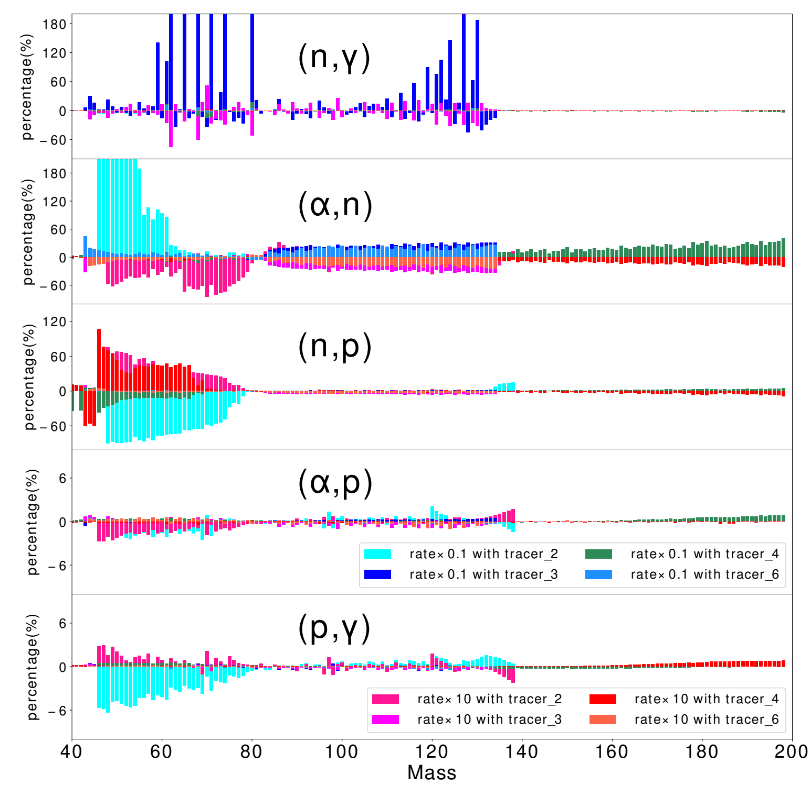Study Reports (α,n) Reaction Dominates Weak r-process Nucleosynthesis in MHD Supernovae
A new study has indicated that the (α,n) reaction plays a dominative role in the nucleosynthesis of MagnetoHydrodynamically-Driven Supernovae (MHD-SNe), which provides a better insight into the origin of the lighter heavy elements.
MHD-SNe, also called hypernovae, are an energetic class of supernovae. Their explosion energy can reach about 1052 erg, ten times larger than the canonical core collapse supernovae (CC-SNe). Driven by its strong magnetic fields and fast rotation of the proto neutron star, MHD-SN occurs only when the energy of magnetic field is roughly in equipartition with the kinetic energy.
A number of successful models have been proposed in the past decade, indicating MHD-SN is a reliable site of weak r-process, which is developed for explaining the formation of lighter heavy elements. Nevertheless, previous studies of weak r-process basically focus on another site, CC-SNe, and the character of nuclear reactions in MHD-SNe nucleosynthesis is not clear.
JIN Shilun, a researcher at the Institute of the Modern Physics (IMP) of the Chinese Academy of Sciences (CAS) has performed a sensitivity study on MHD-SNe. By checking the impact of reactions on the final abundance, such as (n,γ), (n,p), (α,n), (α,p) and (p,γ), Jin found that the (α,n) reactions are much more active than other types of reactions, and eventually replace (n,γ) reaction to dominate the MHD-SNe nucleosynthesis.
Furthermore, the study suggests that isotopes of (α,n) reactions from the region Z from 29 to 36 and A from 80 to 90 are the most impactful ones. The sensitive reactions on each element from krypton to silver are also tabulated, which guides the experimental measurement in the future.
"Many isotopes listed in the study are challenging to obtain at present, but will be available on the future facilities, such as the High Intensity Heavy-ion Accelerator Facility (HIAF). We expect to have a better understanding of the origin of the lighter heavy elements through the measurements of these critical reactions," said JIN.
This work is supported by the Major State Basic Research Development Program of China, the CAS Light of West China Program and the CAS Project for Young Scientists in Basic Research.
The study has been published in TheAstrophysical Journal on March xx.

Figure. The discrepancies of abundance as a function of mass number between reaction rate variation and the baseline of (α,n), (n,γ), (p,γ), (n,p) and (α,p) shown in percentage. The reaction rates of each type are entirely increased or decreased 10 times with four representative tracers; some bars in (α,n) and (n,γ) are out of range as they are too much larger than the value of main part. (Image by JIN Shilun)
Contact Information
Institute of Modern Physics
Email: fangliu@impcas.ac.cn



 甘公网安备 62010202000713号
甘公网安备 62010202000713号


